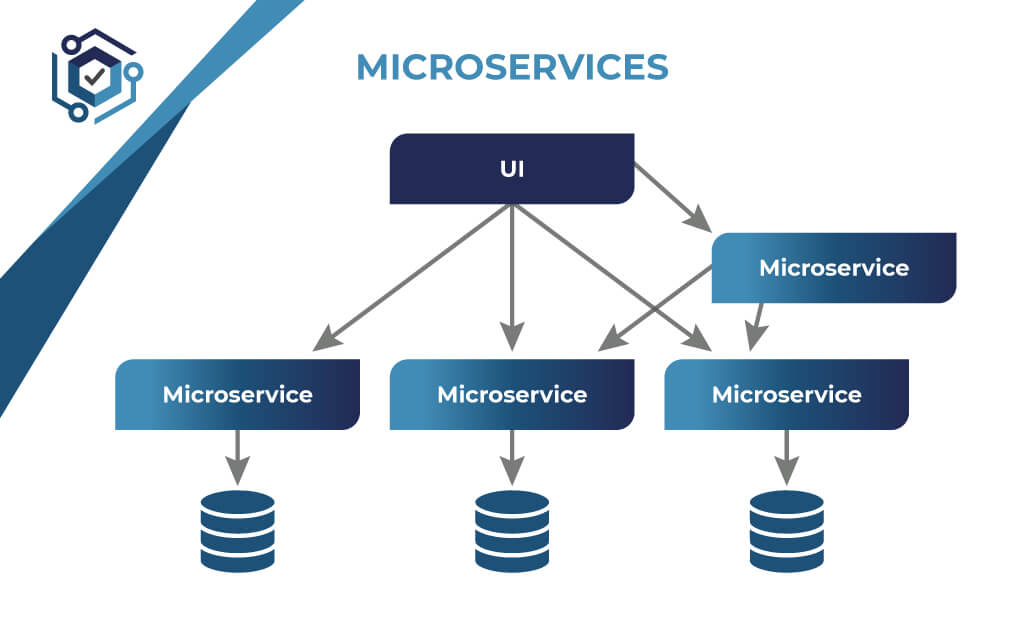In recent years, Building Micronaut microservices using MicrostarterCLI has become increasingly popular among developers aiming to build efficient and scalable applications. The Micronaut framework, known for its low memory footprint and fast startup times, is a fantastic choice for microservices. Pairing it with MicrostarterCLI, a command-line interface tool, allows developers to streamline the process of creating and managing these services. This step-by-step guide will walk you through everything you need to know about Building Micronaut microservices using MicrostarterCLI efficiently.
Why Choose Micronaut for Microservices?
Before diving into Building Micronaut microservices using MicrostarterCLI, it’s essential to understand why Micronaut is such a powerful choice for microservices. Micronaut is a JVM-based framework designed from the ground up to support modular applications. It is optimized for cloud-native environments and provides essential features, including dependency injection, aspect-oriented programming, and seamless integration with various databases and cloud services.

Key Benefits of Building Micronaut Microservices using MicrostarterCLI
Minimal Memory Consumption: Micronaut applications have a low memory footprint, making it ideal for microservices that need to be lightweight.
Fast Startup Times: Micronaut’s efficient compilation and dependency injection makes it quick to start up, enabling better scalability in microservices.
Reactive and Non-blocking: Micronaut supports reactive programming, allowing applications to be highly responsive, which is crucial in distributed systems.
Easy Integration: Micronaut comes with built-in support for various third-party services and databases, which simplifies the development and configuration process.
With these advantages in mind, Building Micronaut microservices using MicrostarterCLI makes development even smoother by automating essential setups, minimizing manual configurations, and generating a basic project structure.
Setting Up Building Micronaut microservices using MicrostarterCLI
To begin building Micronaut microservices using MicrostarterCLI, you’ll need to install MicrostarterCLI, an open-source CLI tool specifically designed to simplify the development of microservices with the Micronaut framework. MicrostarterCLI automates project creation, configuration, and dependency management, saving significant time for developers.
Step 1: Installing MicrostarterCLI
- Check Prerequisites: Ensure that you have Java 11 or higher installed on your machine. You can check this by running `java -version` in your terminal.
- Download MicrostarterCLI: Head to the official MicrostarterCLI GitHub repository or website and follow the installation instructions for your operating system. For example, on macOS, you can install it via Homebrew:
shell
brew install microstarter-cli
- Verify Installation: After installation, verify that MicrostarterCLI is correctly installed by running:
shell
microstarter-cli –version
If installed successfully, this command will display the current version of MicrostarterCLI.
Creating a Micronaut Microservice with MicrostarterCLI
Now that MicrostarterCLI is installed, we can proceed with Building Micronaut microservices using MicrostarterCLI. Follow these steps to create your first microservice with ease.
Step 2: Initializing a Micronaut Project
- Run the Init Command: Start by navigating to your desired project directory in your terminal. Then, use the following command to initialize a new Micronaut project:
shell
microstarter-cli init –framework micronaut
This command will prompt you to specify certain configurations, such as the project name, base package, and language preference (Java, Kotlin, or Groovy).
- Select Dependencies: During the initialization, MicrostarterCLI will also ask which dependencies to include, such as MongoDB, Kafka, Redis, or MySQL. Choose the ones required for your project.
- Generate Project Files: After configuration, MicrostarterCLI generates the project files and folder structure. You’ll find essential folders like `src/main/java` for your main codebase, `src/test` for tests, and `application.yml` for configuration settings.
By following these simple commands, Building Micronaut microservices using MicrostarterCLI becomes streamlined, and you’re left with a foundational project structure.

Configuring Micronaut Microservice Properties
Configuring your Micronaut microservice properties accurately is crucial to ensure the application runs smoothly and securely. Let’s look at the basic settings necessary for Building Micronaut microservices using MicrostarterCLI.
Step 3: Editing `application.yml`
The `application.yml` file is where you define your application’s configurations. When you run the MicrostarterCLI setup, it automatically generates this file with default configurations. Open it to add specific settings:
- Set Application Port: By default, Micronaut applications run on port 8080.
micronaut:
server:
port: 8081
- Configure Database: If your microservice interacts with a database, add your database configurations here. For example:
yaml
datasources:
default:
url: jdbc:mysql://localhost:3306/mydb
driverClassName: com.mysql.cj.jdbc.Driver
username: root
password: password
- Enable Caching and Security: Micronaut has built-in support for caching and security. For caching, you can use the following setup:
yaml
micronaut:
caches:
default:
maximumSize: 100
expireAfterWrite: 10m
Developing Your First Endpoint
With your project structure and configurations ready, let’s dive into creating an endpoint, the heart of any microservice. Here’s a straightforward process for Building Micronaut microservices using MicrostarterCLI.
Step 4: Creating a Controller
In Micronaut, a controller manages HTTP requests. To create one:
- Create the Controller Class: Inside `src/main/java/com/yourpackage`, create a new class named `HelloController`. Here’s an example:
java
import io.micronaut.http.annotation.Controller;
import io.micronaut.http.annotation.Get;
@Controller(“/hello”)
public class HelloController {
@Get(“/”)
public String sayHello() {
return “Hello from Micronaut!”;
}
}
- Define Endpoints: The `@Controller` annotation denotes this class as a controller, and `@Get` maps the `sayHello` method to an HTTP GET request. When you run the application and access `http://localhost:8081/hello`, this method returns the string “Hello from Micronaut!”
Step 5: Running and Testing Your Microservice
After implementing the controller, it’s time to run and test your microservice.
- Run the Application: Use the following command to start your Building Micronaut microservices using MicrostarterCLI:
shell
./gradlew run
- Test the Endpoint: Open a web browser or use a tool like Postman to access `http://localhost:8081/hello`. If everything is set up correctly, you’ll see the response “Hello from Micronaut!”
This completes the basic steps for Building Micronaut microservices using MicrostarterCLI, demonstrating how easy it is to set up a microservice.
Scaling Your Microservices
One of the primary reasons for Building Micronaut microservices using MicrostarterCLI is the scalability it provides. Micronaut’s memory-efficient design allows applications to run multiple instances without excessive resource consumption. Here’s how you can take advantage of Micronaut’s scalability features.
Step 6: Leveraging Micronaut’s Built-in Tools
- Service Discovery: Integrate your microservices with service discovery tools like Eureka or Consul to automatically detect services as they are added or removed from your network.
- Load Balancing: Micronaut supports load balancing out of the box when configured with service discovery. This ensures that incoming requests are distributed evenly across available instances, improving application performance.
- Monitoring and Observability: Tools like Prometheus and Grafana can be integrated with Micronaut to monitor application performance. They offer insights into CPU usage, memory consumption, and response times, which helps optimize the microservices environment.
By leveraging these tools, Building Micronaut microservices using MicrostarterCLI becomes not only straightforward but also highly scalable, giving developers more control over performance.
Best Practices for Building Micronaut Microservices Using MicrostarterCLI Development
As you continue Building Micronaut microservices using MicrostarterCLI, keep the following best practices in mind to ensure optimal performance and maintainability.
- Modularize Your Code: Organize code into small, cohesive modules. This makes each microservice easier to manage and scale individually.
- Implement Circuit Breakers: Micronaut supports circuit-breaking mechanisms to handle failures gracefully. Circuit breakers prevent cascading failures in case one service goes down.
- Use Async Operations: Leverage Micronaut’s support for asynchronous programming to improve responsiveness and efficiency.
Conclusion
In summary, Building Micronaut microservices using MicrostarterCLI is an efficient way to streamline the development of scalable, high-performance microservices. From the initial setup with Building Micronaut microservices using MicrostarterCLI to creating controllers and configuring essential properties, this guide covers the basics to get you started. By following best practices and leveraging Micronaut’s tools for scalability, you’ll be well on your way to developing robust microservices that can adapt to any demand.




